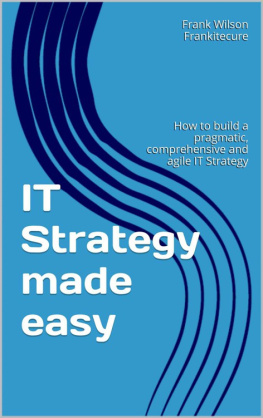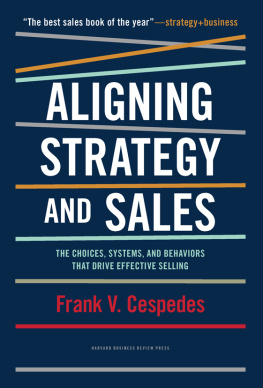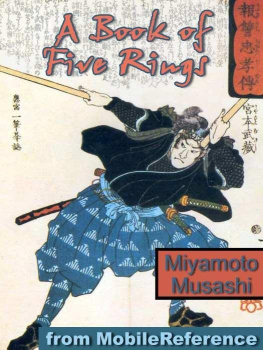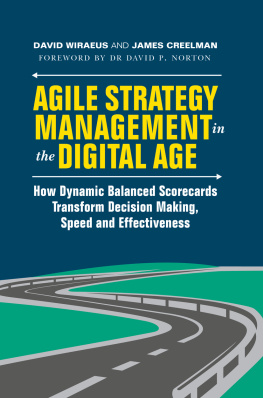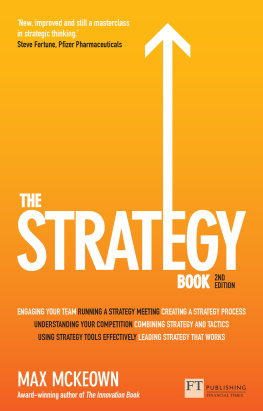Frank Wilson - IT Strategy Made Easy
Here you can read online Frank Wilson - IT Strategy Made Easy full text of the book (entire story) in english for free. Download pdf and epub, get meaning, cover and reviews about this ebook. year: 2013, publisher: Frank Wilson - Frankitecture, genre: Business. Description of the work, (preface) as well as reviews are available. Best literature library LitArk.com created for fans of good reading and offers a wide selection of genres:
Romance novel
Science fiction
Adventure
Detective
Science
History
Home and family
Prose
Art
Politics
Computer
Non-fiction
Religion
Business
Children
Humor
Choose a favorite category and find really read worthwhile books. Enjoy immersion in the world of imagination, feel the emotions of the characters or learn something new for yourself, make an fascinating discovery.
- Book:IT Strategy Made Easy
- Author:
- Publisher:Frank Wilson - Frankitecture
- Genre:
- Year:2013
- Rating:4 / 5
- Favourites:Add to favourites
- Your mark:
- 80
- 1
- 2
- 3
- 4
- 5
IT Strategy Made Easy: summary, description and annotation
We offer to read an annotation, description, summary or preface (depends on what the author of the book "IT Strategy Made Easy" wrote himself). If you haven't found the necessary information about the book — write in the comments, we will try to find it.
IT Strategy Made Easy — read online for free the complete book (whole text) full work
Below is the text of the book, divided by pages. System saving the place of the last page read, allows you to conveniently read the book "IT Strategy Made Easy" online for free, without having to search again every time where you left off. Put a bookmark, and you can go to the page where you finished reading at any time.
Font size:
Interval:
Bookmark:
Preface
Everyone who has worked in any IT organization has listened, at least one time in its professional career, some of those statements and judgments on the failures and limits of any IT department to support the business needs:
...IT management had difficulty keeping staff focused on strategic initiatives
...IT had lost credibility with the business by missing deadlines and delivering inappropriate systems
....IT staff has limited interest on the business strategy and it is not fully aligned with business needs
...all our prior top IT strategic initiatives failed; so now we need an executable strategy with clear actions defined
...an IT strategy is immediately needed to manage our growing complexity
...my IT department needs to be creative and innovative with business
Im quite sure that in any of those organization IT strategy is considered a key element of a well-managed and business supportive IT department which want to avoid the above failures; however due to many reasons moving from this awareness to an effective ability to define and execute a proper strategy for achieving expected results is something that is not so obvious.
Before describing how to solve, or at least mitigate, this problem I would like to focus on some key challenges that nowadays every CIO or IT leadership team, face for succeeding in their own organization into their organization in order to bring value and effectively support the corporate strategy and needs.
Challenge #1: Business Strategy is fast changing and IT must understand what the Business Strategy is and how to support it in a timely fashionA number of key business drivers have shifted the emphasis in business terms, and therefore in the way that IT must respond, such as:
- mergers and acquisitions which require a growing challenge of integrating disparate businesses
- e-business which has introduce new ways of working
- outsourcing and the new complexities and issues that this brings forward
- users that are becoming increasingly informed, demanding and selective
- parties involved which have been extended from internal users to external partners and suppliers
- deregulation of the new economies
However, even if business is the key driver for IT; it is astonishing to notice how many IT department employees do not know what their company business strategy is, beyond few high level statements. They have no idea of context they move in and no sense of how the strategy has been shaped by the competitive landscape.
This is very similar to what Richard Feynman faces when took over leadership of a team of mathematicians working on critical research for the bomb. He founds that the team, due strict to confidentiality policies, had no knowledge of what it was working on as a whole; each member of the team was given a problem, and each took some three months to solve it. Feynman insisted he get permission to tell his team what it was working on and after the team members were aware of this, their productivity increased to three problems a month!
Knowing the context provides motivation as well as a mechanism to make more informed choices. This business context and directions must be understood quickly, indeed the great challenge for IT managers today is to move around in the globalized world of the economy in which the rules and dynamics are in perpetual and quick evolution.
Challenge #2: Information technology is becoming more and more a source of competitive advantage and an enabler for innovation and new business modelsAs Nicholas Carr states in his famous article IT Doesnt Matter, what makes a resource truly strategic (meaning to be the basis for a sustained competitive advantage) is not ubiquity but scarcity; you only gain an edge over rivals by doing something that they cant do. The core functions of IT (data storage, data processing, and data transport) have become available and affordable to all; they have begun to transform them from potentially strategic resources into commodities; they are becoming costs of doing business that must be paid by all but provide distinction to none. This means that while the world becomes more digitally transformed and connected, companies need to reduce the percentage of budget spent on keeping the lights-on and shift spending to the top business priorities; its no longer sufficient to simply keep the company up and running.
In order to remain relevant in this new environment, organizations must be able to implement the latest technologies quickly, and ensure that what they implement is engineered to work with the entire technology stack.
Consequently IT Departments need to evolve from an organization structure which supports the business units in automating their processes and channels into an innovation task force which can propose systems and technologies which should enable new business models or products/services. Although CIOs were traditionally hired to focus on operations and cost reduction, the need for an organization to drive innovation has created a critical new role for CIOs which is more focused on innovation and growth. CIOs are uniquely positioned to develop and drive innovation, influence cultural change, and deliver the innovation strategy.
In a nutshell the role of the CIO must evolve from being the Chief Information Officer to being the Chief Innovation Officer. In doing this IT Strategy play a key role in properly planning the systems evolution in order to keep into consideration emerging trends and technologies and also manage strategic principles (like flexibility, manageability.) which ensure for unplanned model to be accommodated in the future.
Reducing IT complexity to free-up time and budget for proposing innovation is only part of the solution; indeed many IT organizations have been culturally attuned to resist to new ideas rather than to embrace innovation. True innovation requires the opposite mind-set and a cultural step-change which is able to shape a new organizational and operation model.
Challenge #3: Compared to other company organization departments, IT department has more challenges because it have to interface with each of those different business functions providing solution which harmonize different, and sometimes competing objectives and needsLet us consider a business comprising of a number of distinct organization units: Product Development, Manufacturing & Logistics, Sales & Marketing, Customer Services, Finance, Human Resources, and Information Technology. Of these, the first four have business-specific goals as their objectives and so different needs which usually require different or contradicting solutions. The remaining three departments offer services to the business as a whole, however although every other function is dependent on them, the Finance and HR services are consistent across the organization and they can therefore organize themselves to best suit delivery of that services.
IT department faces the most difficult challenge because it have to manage heterogeneous needs and expectations, but also harmonize them in a common and effective picture (which is the IT architecture) guaranteeing synergies, reuse and cost optimization while satisfying different business unit objectives. While it might be relatively straightforward to articulate elements of vision in each of these business units the issue of cross-alignment complicates the picture for IT. In fact each of these departments not only works in their own particular way (process and governance) but also has some systems requirements which should uniquely organized to best meet their local challenges.
Challenge #4: As the internal and external business environment evolves a certain amount of shift is experienced in the system landscape that must be managed by IT department in order to avoid building an unmanageable architecture and wasting of resourcesNext pageFont size:
Interval:
Bookmark:
Similar books «IT Strategy Made Easy»
Look at similar books to IT Strategy Made Easy. We have selected literature similar in name and meaning in the hope of providing readers with more options to find new, interesting, not yet read works.
Discussion, reviews of the book IT Strategy Made Easy and just readers' own opinions. Leave your comments, write what you think about the work, its meaning or the main characters. Specify what exactly you liked and what you didn't like, and why you think so.

